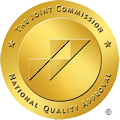Quitting methamphetamine is one of the bravest decisions anyone can make, but it comes with its own set of challenges. Many people embark on this journey, often unsure of what to expect during the detox process. The timeline for meth withdrawal can be daunting, filled with both physical and emotional hurdles.
Understanding what lies ahead can make a significant difference in navigating through this tough period. At California Addiction Treatment, we provide comprehensive support to help individuals through every stage of meth withdrawal. Our holistic approach includes medical supervision to manage physical symptoms, therapeutic support through individual and group therapy sessions, and aftercare planning to help maintain long-term sobriety. Knowing what to expect can provide much-needed clarity and reassurance, whether you’re supporting a loved one or going through it yourself.
Understanding Meth Withdrawal
Methamphetamine, commonly known as meth, is a highly addictive stimulant that affects the central nervous system. It produces intense euphoria and increased energy by boosting dopamine levels in the brain. Meth can be smoked, snorted, injected, or ingested, leading to rapid addiction. Prolonged use causes severe health issues, including cognitive decline, mental health problems, severe dental issues, and neurological damage.
When someone stops using meth, they may experience a range of withdrawal symptoms that vary in intensity and duration. Common symptoms include fatigue, depression, increased appetite, anxiety, irritability, sleep disturbances, and strong cravings. The timeline of meth withdrawal generally follows a predictable pattern, with an initial crash, an acute withdrawal phase, and subacute symptoms that may persist for weeks. Proper medical supervision and support are essential for managing meth withdrawal effectively.
How Long Does Meth Withdrawal Take?
The duration of meth withdrawal can vary depending on factors such as the level of dependency, duration of use, and individual health. Generally, the withdrawal process can be broken down into three stages:
The crash phase typically lasts between 24 to 48 hours and is characterized by extreme exhaustion, increased appetite, depression, anxiety, and intense drug cravings. During this period, users may experience excessive sleep as their bodies recover from the intense stimulation caused by meth use. The body, having been in a hyperactive state for a prolonged period, often responds by shutting down to recuperate.
This phase can also involve feelings of hopelessness and despair as the brain begins to adjust to the absence of the drug. It’s crucial during this time to ensure a safe environment, as the combination of mental and physical symptoms can be overwhelming for the individual.
The acute withdrawal phase usually spans about 7 to 10 days but can extend to several weeks. Symptoms during this phase include fatigue, depression, anxiety, irritability, and continued drug cravings. Physical symptoms such as headaches, muscle pain, and increased appetite are common, and sleep disturbances may also persist.
During this stage, individuals might struggle with an inability to feel pleasure, known as anhedonia, which can make day-to-day activities seem unrewarding. The intensity of cravings during acute withdrawal often leads to a high risk of relapse. Supportive care, including hydration, nutrition, and a structured routine, can help manage these symptoms and reduce the likelihood of returning to drug use.
The protracted withdrawal phase can last several weeks to months. While the most intense symptoms typically subside after the first two weeks, some psychological symptoms can persist for much longer. These may include mood swings, anxiety, depression, and continued cravings. Cognitive issues, such as difficulties with memory and concentration, may also persist during this phase. The lingering effects can interfere with daily functioning and the ability to maintain employment or personal relationships.
It’s not uncommon for individuals to experience a rollercoaster of emotions, with periods of improvement followed by setbacks. Long-term therapeutic strategies, such as cognitive-behavioral therapy (CBT) and support groups, are crucial for helping individuals manage ongoing challenges and achieve sustained recovery.
Symptoms of Meth Withdrawal
Meth withdrawal symptoms can be both physical, psychological, and behavioral. Recognizing these symptoms is crucial for those undergoing detox and for those supporting them.

- Fatigue: Extreme tiredness and lack of energy.
- Increased Appetite: Unusually high hunger levels.
- Sweating: Excessive sweating, often without physical exertion.
- Headaches: Frequent and sometimes severe headaches.
- Dehydration: Due to increased sweating and lack of proper hydration during meth use.
- Flu-like Symptoms: Such as chills, fever, and general malaise.
- Depression: Persistent feelings of hopelessness and sadness.
- Anxiety: Increased feelings of anxiety levels and frequent panic attacks.
- Irritability: Increased irritability and frustration.
- Paranoia: Suspiciousness and irrational fears.
- Mood Swings: Sudden and erratic changes in mood.
- Cognitive Issues: Difficulties with memory, focus, and decision-making.
- Psychosis: In severe cases, hallucinations and delusions.
- Cravings: Intense desire to use meth again.
- Restlessness: Inability to stay still, constant movement, or fidgeting.
- Disrupted Sleep Patterns: Difficulty establishing a regular sleep routine.
- Agitation: Increased restlessness and difficulty remaining calm.
How Do You Treat Meth Withdrawal?
Treating methamphetamine (meth) withdrawal involves a combination of medical, psychological, and supportive approaches. Here are some strategies commonly used:
- Medical Detoxification: This is the first step, where the body clears itself of meth. It is often done under medical supervision to manage withdrawal symptoms.
- Medications: While no specific medications are approved for treating meth withdrawal, some may be used to alleviate symptoms such as anxiety, depression, or insomnia. These can include antidepressants, antipsychotics, or anti-anxiety medications.
- Cognitive Behavioral Therapy (CBT): This therapy helps individuals recognize and change negative thought patterns and behaviors associated with meth use.
- Contingency Management: This approach provides tangible rewards to reinforce positive behaviors such as staying drug-free.
- Motivational Interviewing: This technique helps individuals find the motivation to change their behavior and commit to treatment.
- Healthy Diet and Exercise: Proper nutrition and regular physical activity can help improve overall well-being and reduce withdrawal symptoms.
- Stress Management: Techniques such as mindfulness, meditation, and relaxation exercises can help manage stress and anxiety during withdrawal.
- Inpatient Treatment: Inpatient rehabilitation centers provide a structured environment with medical and psychological support for severe cases.
- Outpatient Programs: These programs offer flexibility for individuals to receive treatment while continuing with their daily lives.
- Aftercare Programs: Continued support through aftercare programs can help maintain sobriety and prevent relapse.
- Building a Support Network: Having a strong support network of friends, family, and professionals is crucial for long-term recovery.
When to Seek Detox
Determining the need for detoxification is a critical step in the recovery process from substance use disorder. The decision often hinges on the severity of the addiction and the withdrawal symptoms experienced. Below are key indicators that professional detox might be necessary:
Intense physical or psychological symptoms that are challenging to manage on one’s own are strong indicators for seeking professional detox. These symptoms can include severe nausea, vomiting, sweating, tremors, seizures, hallucinations, or severe anxiety and depression. Attempting to detox without medical supervision in such cases can be dangerous and potentially life-threatening.
If you experience strong cravings and have a history of relapse, it might be essential to seek professional support. Relapse is common during the detox phase due to the discomfort and intensity of withdrawal symptoms. Professional detox centers provide a controlled environment that reduces the temptation to relapse and helps manage cravings effectively.
The presence of mental health disorders, such as depression, anxiety, bipolar disorder, or psychosis, alongside addiction, often necessitates professional detox. These co-occurring disorders can complicate the detox process, requiring integrated treatment approaches to address both the addiction and the mental health conditions simultaneously.
Difficulty performing daily activities or maintaining responsibilities due to withdrawal symptoms is a clear sign that professional help is needed. Withdrawal can significantly impair one’s ability to work, care for oneself, or interact with others. Professional detox can provide the necessary support and stability to manage these symptoms while focusing on recovery.
An absence of a stable and supportive environment for detox and recovery can make it nearly impossible to succeed alone. Detoxing at home without the proper support can lead to feelings of isolation, making the process more difficult. Professional detox centers offer a supportive and structured environment, essential for a successful detox and the beginning of a recovery journey.
Take Steps Towards Recovery with California Addiction Treatment
 Understanding the meth withdrawal timeline can be daunting, but you don’t have to face it alone. Our detox program is designed to provide you with the compassionate care and medical support you need during this challenging time. At California Addiction Treatment, we prioritize your safety and comfort, ensuring a personalized approach to help you successfully navigate the withdrawal process. With our experienced team by your side, you’ll have the guidance and substance abuse resources necessary to start your journey towards a healthier, addiction-free life. Contact us today and take the first step towards reclaiming your future.
Understanding the meth withdrawal timeline can be daunting, but you don’t have to face it alone. Our detox program is designed to provide you with the compassionate care and medical support you need during this challenging time. At California Addiction Treatment, we prioritize your safety and comfort, ensuring a personalized approach to help you successfully navigate the withdrawal process. With our experienced team by your side, you’ll have the guidance and substance abuse resources necessary to start your journey towards a healthier, addiction-free life. Contact us today and take the first step towards reclaiming your future.




